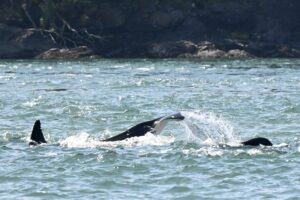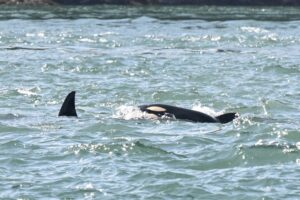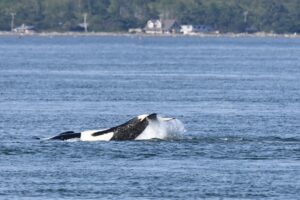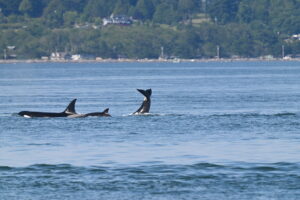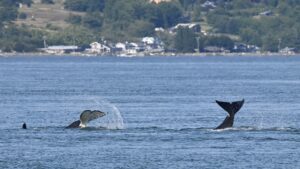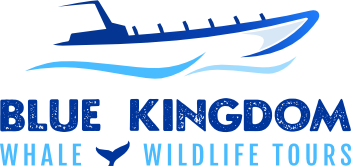Introducing the T46Cs:

Just this past week (6.22-6.27.2025), whale watchers around the region had encounters with the “uncommon-to-our-area” Bigg’s killer whale family group, the T46Cs. First spotted in the Strait of Juan de Fuca in the company of the T75Cs (three unrelated Bigg’s), this mixed social group traveled into the reaches of the central Salish Sea and lapped the San Juan Islands–an area they do not typically frequent. Blue Kingdom crew spent a little bit of time getting to know these whales and we invite you to do so, as well!
Family History:
When researchers first began the Bigg’s killer whale survey, these whales were called “transient” orcas. In order to catalog them, researchers assigned each Bigg’s individual a “T” designation for their community group, and then a number in the order that they were first seen/first recorded. “The T46Cs family group” reveals several things: 1. T46C is the matriarch of this group; 2. T46C’s mother was Bigg’s killer whale T46 (also known as “Wake.” Her fascinating story can be read in a previous blogpost, here); 3. T46C’s ‘C’ is based on her determined birth order, which is a little complicated in this family group. Typically, “C” would indicate that she was the third born, but T46 Wake had a 13 year period where she was not sighted in the Salish Sea. When Wake returned, she had two younger female whales accompanying her. The assumption is that these whales are very likely her offspring, but because of the lack of absolute proof, these females received the next available numbers in the “T” system and became T122 and T123 respectively. As T46 Wake began having more calves (that were recorded with certainty), they carried her ‘T46’ and received a letter in the order of their birth for their designations. If this sounds a little complex, not to fret! These whales all receive common nicknames, too, which can make keeping up with them a little easier. Let me introduce the individuals that make up this family group, currently.
Present Day Family Members:
The T46Cs currently consist of 5 individuals: T46C is mother and matriarch “Carmanah,” born in 1994. She travels with four of her living offspring, adult male T46C1 “Tsunami,” born in 2006; T46C3 “Razor,” born in 2013; T46C4 “Hobi,” born in 2018, and newly documented calf T46C5 (as of June 22nd, 2025), lacking a common nickname, for now. If you’re noticing a gap in the offspring numbering, T46C2 “Sam” is alive and well (b. 2009), but often travels apart from her family group. Earlier this year we encountered her with her cousin T46B1 “Tread,” and B1’s two offspring, T46B1A “Tsakani” and T46B1C “Tide.” Sam has an interesting story all her own and deserves a follow up blog explaining just why, so you’ll have to check back in with us in the future for her story.
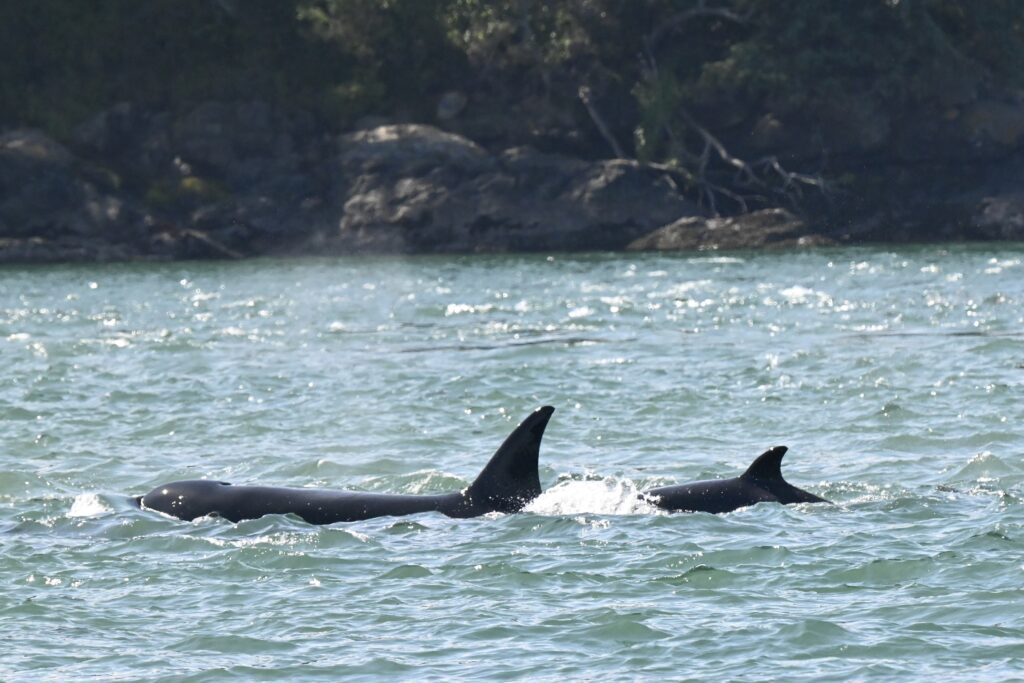
Identifying Physical Features:
Some individual Bigg’s killer whales are easier to quickly identify than others. We look at the size and shape of their dorsal fin, study the shape and nuances of their saddle patch (gray, cloudy, cape-like markings just behind the dorsal fin that spans either side of the orca), eyepatch size, shape, and design, and any other noticeable features, such as nicks, notches, and other missing pieces somewhere along the dorsal fin. In the case of the T46Cs, T46C1 “Tsunami” can already be readily identified in his family group by his massive 5-6 foot dorsal fin, but the two prominent nicks along the trailing edge of his fin sets him apart from other adult Bigg’s males. T46C3 “Razor” received their name based on the saw-blade-like appearance of the missing pieces along their dorsal fin (sex currently unknown for this individual). Some of our best guesses as to how these nicks and notches occur are either through rough housing with other orcas, disciplinary actions from mom, possible negative interactions with other Bigg’s killer whales, and/or negative interactions from the teeth and claws of seals and sea lions that fight back against becoming the orca’s prey.
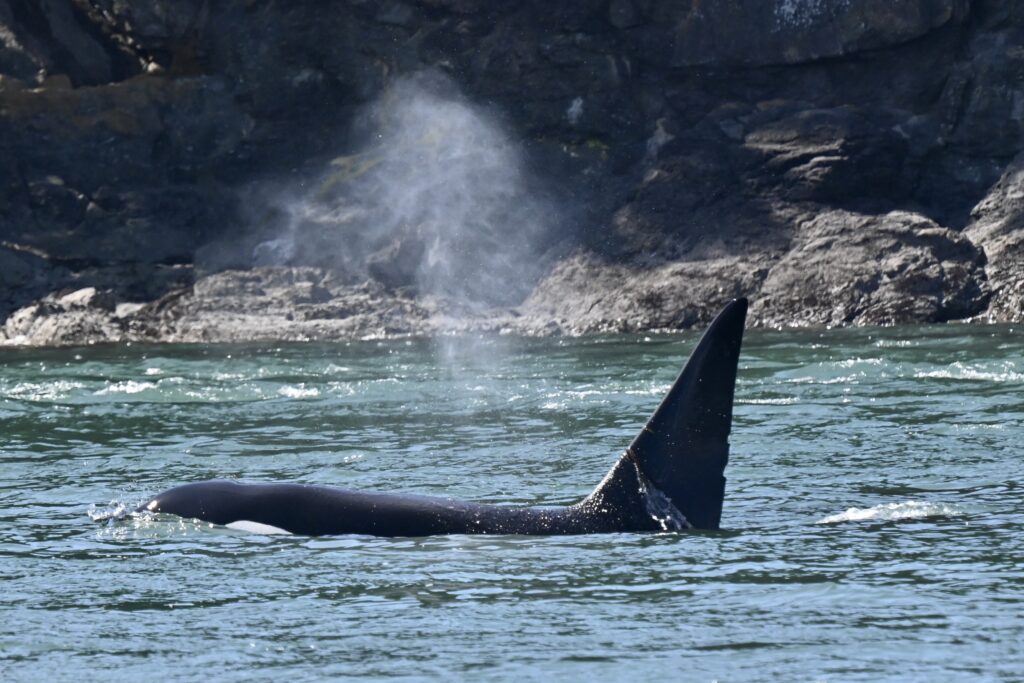
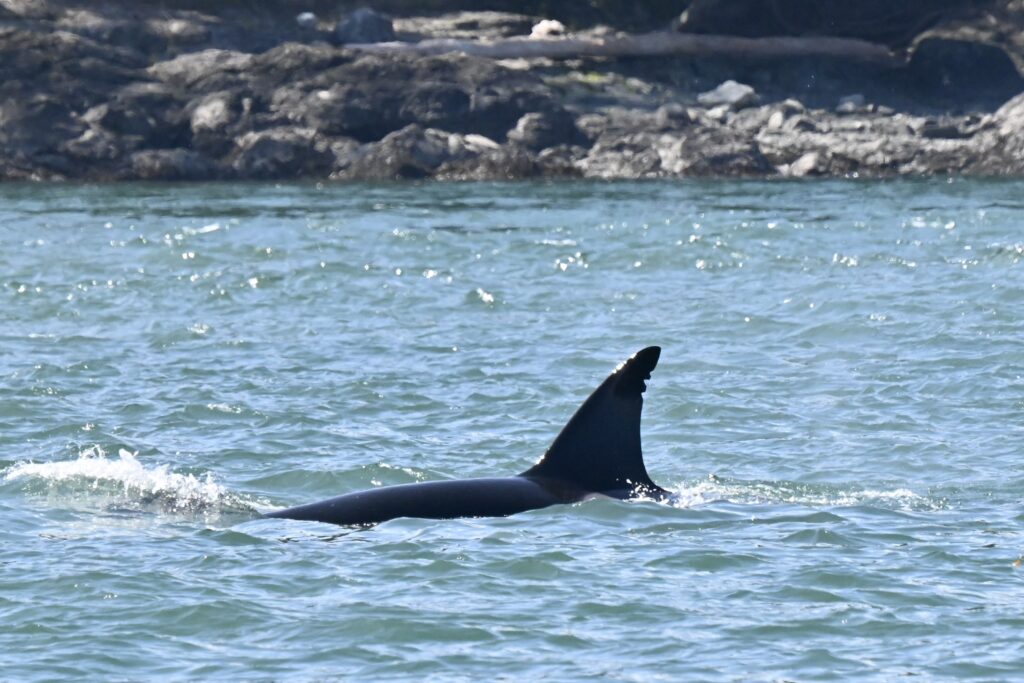
Past Whereabouts:
So if they don’t frequent the central Salish Sea, where DO they frequent? As I did a deeper dive, I utilized the T46C’s distribution map in the 2019 Bigg’s Photo-identification Catalogue published by Fisheries and Oceans, Canada. I also perused an open-access website, Finwave.io, to discover their more-frequent whereabouts. The T46Cs have sighting records as far north as Fredrick Sound in southeastern Alaska, and as far south as the area where Admiralty Inlet meets the Possession Sound. It appears that this family group prefers to travel the waters off the north end of Vancouver Island in the Broughton Archipelago, as well as off the southwestern side of Vancouver Island near Tofino and Ucluelet. They also make forays into the Strait of Juan de Fuca as far east as the Oak Bay Islands Ecological Reserve and the southern reaches of Haro Strait. Could the fact that the T46Cs came into the central Salish Sea with the T75Cs have something to do with their San Juan Islands visit? When looking at the distribution map for the T75Cs, they are seen with much more frequency in the central Salish Sea but also spend some time off the north end of Vancouver Island and near Tofino and Ucluelet, as well. Maybe they convinced the T46Cs to “do a lap” before heading back out toward the Pacific Ocean? This is purely conjecture on my part, though.
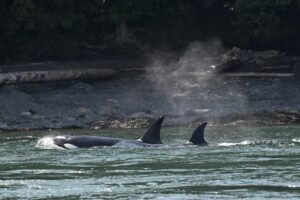
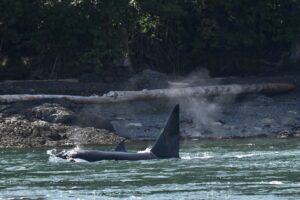
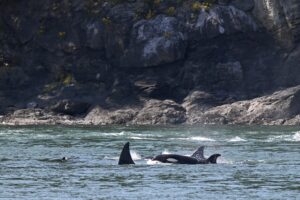
A Fun Observation:
When we encountered the T46Cs and T75Cs they were fighting the flood tide off the east side of Orcas Island near Doe Bay and not making much headway doing so. The youngest whales in the group, T75C3, T75C4, and T46C5 appeared to be engaging in some socializing with one another–they were rolling in the current, on each other, on the adults, and making the occasional tail slap during this time. After a short while, the orcas gave up pushing against the flood and went into a brief period of rest. As they slowed down, their surfacings were happening as the current was carrying them backwards! Once they rounded the Doe Bay area of Orcas Island and got into the waters around the outer islands, the young whales must have convinced the older whales to play just a bit, too. T46C1 “Tsunami” surfaced by his months-old sibling, bringing his large tail flukes up to the surface for a couple of slaps. When T46C5 surfaced for air, the overall size difference between this little one and Tsunami was utterly wild. If Tsunami’s fin is a full 6 feet high, it’s likely that T46C5 is only slightly longer by a couple feet at this life stage. We watched several more breaches, tail slaps, and cartwheels before it was time for us to get guests back to the marina. I think I speak for the whole boat that evening when I say we could have stayed there and watched them play all night. What an awesome introduction we had to this family group. Two days after this encounter, they were seen making their way west in the Strait of Juan de Fuca and are likely out around the west side of Vancouver Island by now. We wish them well in their travels and hope they enjoyed their brief stay with us. Maybe it won’t be too long before they’re back in the area now that they have explore a little bit!
